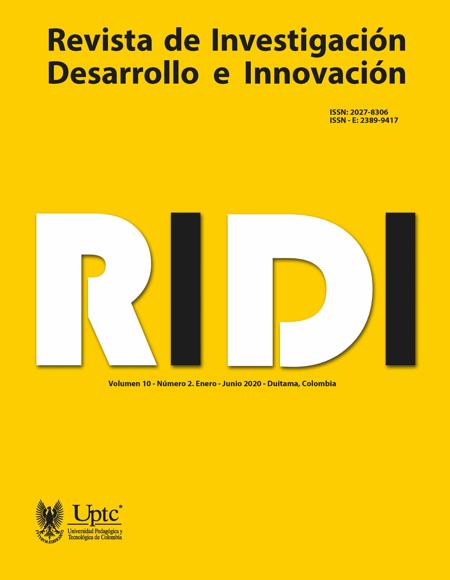Incidence of cognitive and affective attitudes of consumers in the defense of a local brand

Abstract
From marketing, this study explores the perceptions of consumers about the local brand La Catira Industria Láctea, located in the department of Meta, Colombia. It aims to analyze the cognitive and affective attitudes of the consumer in relation to the brand in order to establish the variable with the greatest impact on its defense. Data collection was carried out through 187 in-person and online surveys. Despite being a representative brand in the region, in the affective component 27.8% claim to love this brand, a value that did not exceed the percentages for the cognitive component, which shows that 66.4% claim that the products of the brand are of a very good quality. The results suggest that the perceived quality is the variable of the cognitive attitude that is most related to the defense of the brand. In addition, the weakness in the emotional bond is evidenced from the perspective of the consumer in relation to the brand studied.
Keywords
marketing;, cognitive attitude;, affective attitude;, brand defense
Author Biography
María Cristina Otero-Gómez
Profesional en comercio internacional, Estudiante de Doctorado en Marketing
Wilson Giraldo-Pérez
Administrador de Empresas, Estudiante de Doctorado en marketing
References
Aaker, D. (1996). Measuring brand equity across products and markets. California Management Review, 38 (3), 102-120. Recuperado de: https://www.academia.edu/7284936/Aaker_1996_Measuring_Brand_Equity_Across_Products_and_Markets
Bagozzi, R. P., Batra, R., & Ahuvia, A. (2017). Brand love: Development and validation of a practical scale. Marketing Letters, 28 (1), 1-14. doi: 10.1007/s11002-016-9406-1
Batra, R., Ahuvia, A., & Bagozzi, R. P. (2012). Brand love. Journal of Marketing, 76 (2), 1-16. doi:10.1509/jm.09.0339
Burnasheva, R., Suh, Y. G., & Villalobos, M. K. (2019). Sense of community and social identity effect on brand love: Based on the online communities of a luxury fashion brands. Journal of Global Fashion Marketing, 10 (1), 50-65. doi:10.1080/20932685.2018.1558087
Carroll, B. A., & Ahuvia, A. C. (2006). Some antecedents and outcomes of brand love. Marketing Letters, 17 (2), 79–89. doi:10.1007/s11002-006-4219-2
Cavazos, A. J., & Giuliani, A. C. (2008). El concepto de marketing bajo el paradigma relacional. Una agenda para Latinoamérica. Invenio, 11 (20), 41-52. Recuperado de: https://dialnet.unirioja.es/servlet/articulo?codigo=4225542
Daems, K., De Pelsmacker, P., & Moons, I. (2019). The effect of ad integration and interactivity on young teenagers’ memory, brand attitude and personal data sharing. Computers in Human Behavior, 99, 245-259. doi: 10.1016/j.chb.2019.05.031
Dotson, J. P., Fan, R. R., Feit, E. M., Oldham, J. D., & Yeh, Y. H. (2017). Brand attitudes and search engine queries. Journal of Interactive Marketing, 37, 105-116. doi: 10.1016/j.intmar.2016.10.002
Du, R. X., Joo, M., & Wilbur, K. (2019). Advertising and brand attitudes: Evidence from 575 brands over five years. Quantitative Marketing and Economics, 17 (3), 257-323. doi: 10.1007/s11129-018-9204-6
Federación Nacional de Comerciantes (2019). FENALCO Meta pide declarar emergencia económica por problemas de la vía al llano. Recuperado de: http://www.fenalco.com.co/bienvenidos/fenalco-meta-pide-declarar-emergencia-econ%C3%B3mica-por-problemas-de-la-v%C3%ADa-al-lla
Gill, M. S., & Dawra, J. (2010). Evaluating Aaker’s sources of brand equity and the mediating role of brand image. Journal of targeting, measurement and analysis for marketing, 18 (3/4), 189-198. doi: 10.1057/jt.2010.11
Keller, K. L. (1993). Conceptualizing, measuring, and managing customer-based brand equity. Journal of Marketing, 57 (1), 1-22. doi: https://doi.org/10.1177/002224299305700101
Lassar, W., Mittal, B., & Sharma, A. (1995). Measuring customer-based brand equity. Journal of Consumer Marketing, 12 (4), 11-19. doi:10.1108/07363769510095270
Melancon, J. P., Noble, S. M., & Noble, C. H. (2011). Managing rewards to enhance relational worth. Journal of the Academy of Marketing Science, 39 (3), 341-362. doi:10.1007/s11747-010-0206-5
Morales, J. F. (1999). Psicología Social. Madrid: Editorial McGraw-Hill.
Netemeyer, R. G., Krishnan, B., Pullig, C., Wang, G., Yagci, M., Dean, D., Ricks, J., & Wirth, F. (2004). Developing and validating measures of facets of customer-based brand equity. Journal of Business Research, 57, 209-224. doi:10.1016/S0148-2963(01)00303-4
Pappu, R., Quester, P. G., & Cooksey, R. W. (2005). Consumer‐based brand equity: improving the measurement – empirical evidence. Journal of Product & Brand Management, 14 (3), 143-154. doi:10.1108/10610420510601012
Roy, S. K., Eshghi, A., & Sarkar, A. (2013). Antecedents and consequences of brand love. Journal of Brand Management, 20 (4), 325-332. doi:10.1057/bm.2012.24
Schmid, D. A., & Huber, F. (2019). Brand love: Emotionality and development of its elements across the relationship lifecycle. Psychology & Marketing, 36 (4), 305-320. doi:10.1002/mar.21180
Semana Rural (2018). La Vía al Llano: el incurable dolor de cabeza del Meta. Recuperado de https://semanarural.com/web/articulo/via-al-llano-cierre-de-la-carretera-bogota-villavicencio/641
Sürücü, O., Öztürk, Y. Okumus, F., & Bilgihan, A. (2019). Brand awareness, image, physical quality and employee behavior as building blocks of customer-based brand equity: Consequences in the hotel context. Journal of Hospitality and Tourism Management, 40, 114-124. doi: 10.1016/j.jhtm.2019.07.002
Villarejo, A. F. (2002). Modelos multidimensionales para la medición del valor de marca. Investigaciones europeas de dirección y economía de la empresa, 8 (3), 12-44. Recuperado de: https://dialnet.unirioja.es/servlet/articulo?codigo=634171
Wallace, E., Buil, I., & De Chernatony, L. (2014). Consumer engagement with self-expressive brands: Brand love and WOM outcomes. The Journal of Product and Brand Management, 23 (1), 33-42. doi: 10.1108/JPBM-06-2013-0326
Walz, A. M., & Celuch, K. G. (2010). The effect of retailer communication on customer advocacy: the moderating role of trust. Journal of Consumer Satisfaction, Dissatisfaction & Complaining Behavior, 23, 95-110. Recuperado de: https://jcsdcb.com/index.php/JCSDCB/article/view/25
Yoo, B., Donthu, N., & Lee, S. (2000). An examination of selected marketing mix elements and brand equity. Academy of Marketing Science, 28 (2), 195-211. doi:10.1177/0092070300
Zarantonello, L., Formisano, M., & Grappi, S. (2016). The relationship between brand love and actual brand performance: Evidence from an international study. International Marketing Review 33 (6), 806-824. doi: 10.1108/IMR-11-2015-0238
Zeithaml, V. (1988). Consumer perceptions of price, quality, and value: a means-end model and synthesis of the evidence. Journal of Marketing, 52, 2-22. doi: 10.2307/1251446